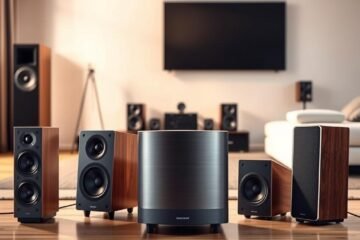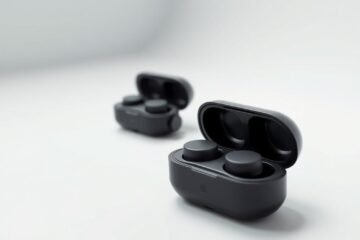Did you know that 64% of consumers now look for sustainable products? And 80% are willing to pay more for items that are good for the planet.
Can your gadgets help save the planet? Yes, they can in 2025. The audio industry is going green, changing how we see our devices.
Sustainable technology is more than just a trend. It’s leading to new ideas in sound equipment. Now, you can find green audio devices that sound great and are kind to the earth.
In 2025, great sound doesn’t have to harm the planet. More brands are making eco-friendly audio gadgets that sound amazing and are good for the environment. Whether you love music, podcasts, or immersive audio, the latest Eco-Friendly Audio Gadgets 2025 are here to impress.
These innovations include solar-powered headphones and speakers made from recycled materials. They show that you can enjoy great sound without hurting the planet. If you want to choose tech that’s good for the environment, you’re in for a treat. Let’s dive into the top sustainable audio gear for 2025.
Key Takeaways
- 64% of consumers prioritize sustainability when purchasing products
- 80% of buyers will pay premium prices for environmentally responsible audio equipment
- Sustainable audio devices use recycled materials and energy-efficient technology
- Green manufacturing processes reduce environmental impact without compromising sound quality
- 2025 offers the widest selection of eco-conscious audio options ever available
- Bamboo, recycled plastics, and solar power are leading sustainable audio innovations
Why Your Audio Gadgets Can Help Save the Planet in 2025
The environmental impact of your favorite audio gadgets starts long before you press play. You might think daily use is the biggest problem. But, manufacturing is where most environmental damage comes from.
Think about this: using your smartphone only uses 1 percent of its carbon emissions. The other 99 percent comes from mining, making the device, and shipping it. Your headphones, speakers, and other audio gear have the same issue.
Traditional audio device making harms the environment in many ways. Mining for rare earth metals hurts nature. Making devices uses a lot of energy and burns fossil fuels. Also, too much packaging creates waste, and not recycling devices ends them up in landfills.
Eco-conscious audio gear tackles these problems with new ideas. It uses sustainable materials and renewable energy. It also has less packaging to reduce waste.
Companies making green audio equipment also recycle a lot. They make sure old devices are recycled, not thrown away. Some even take back their products.
Your choices matter more than you think. Choosing eco-friendly sound accessories over regular ones sends a message. This message tells companies to make cleaner products.
The audio industry listens to what you want. When more people buy green audio equipment, companies invest in being more sustainable. Your choice helps push the industry towards being greener.
In 2025, this change will make a big difference. Renewable energy gadgets will be common, not just special items. Sustainable materials will replace harmful ones in making devices.
Choosing eco-friendly audio gear today helps shape the future. Your choices support companies that are leading the way in clean technology and sustainable practices.
Looking for longer-life wearables? Our audio glasses guide highlights repairable, Rx-ready options.
Understanding What Makes Audio Gear Eco-Conscious
What makes audio gear eco-friendly? It’s about the materials, how it’s made, and its design. The demand for eco-conscious audio equipment is growing. This has led to new ways to make products that are good for the planet without losing sound quality. Now, people want to know what’s real when it comes to sustainability.
There are standards and labels to help figure out a product’s environmental impact. Look for the EPEAT (Electronic Product Environmental Assessment Tool) label and TCO Certified. These labels check many social and environmental factors.
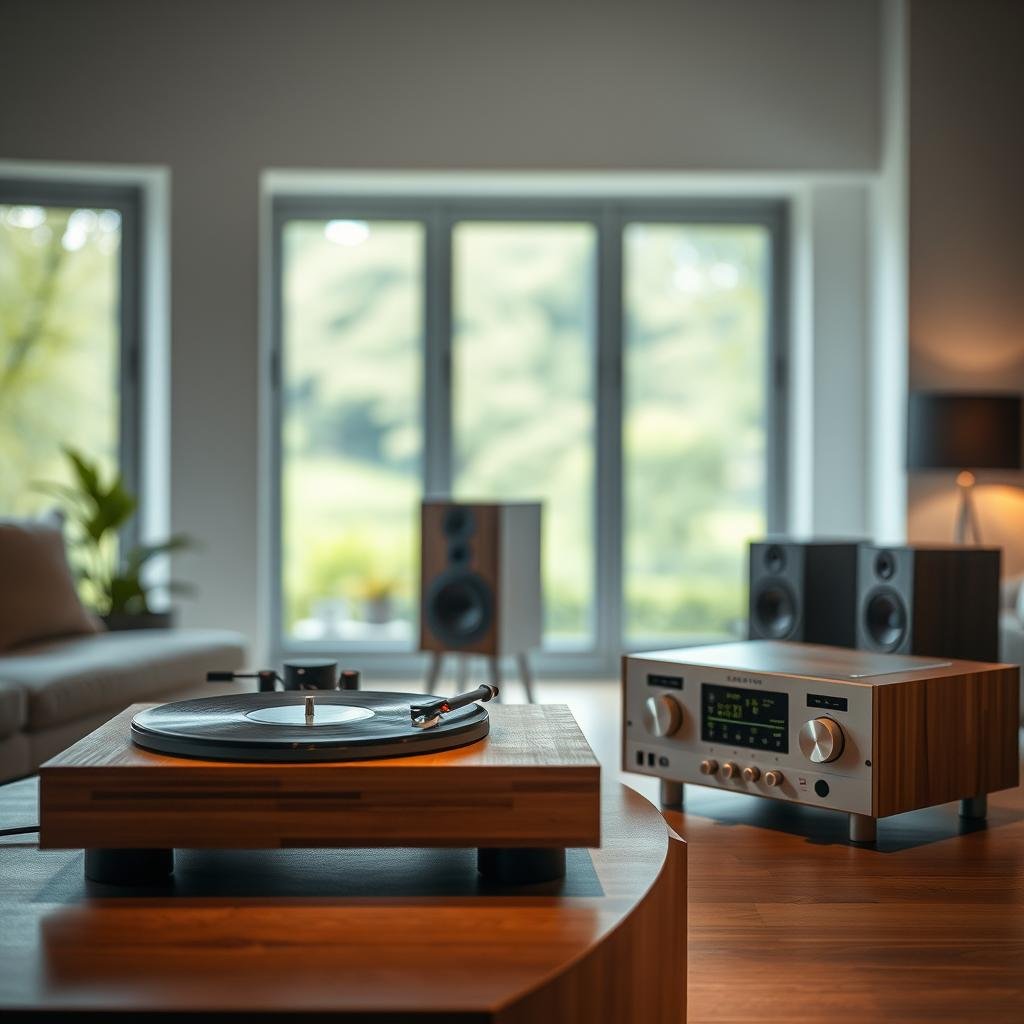
Key Environmental Features to Look For
True sustainable audio tech looks at the whole product lifecycle. It has features that really help the environment, not just marketing tricks. Knowing these helps you choose better.
Key features include using sustainable materials, being energy-efficient, and making it responsibly. Recyclable packaging and designs that can be updated also help. Certifications prove environmental claims are true.
| Environmental Feature | Description | Impact Level | Examples |
|---|---|---|---|
| Sustainable Materials | Bamboo, recycled plastics, reclaimed metals | High | Bamboo housings, recycled aluminum frames |
| Energy Efficiency | Low power consumption, solar charging | High | Extended battery life, solar panels |
| Minimal Packaging | Recycled materials, reduced waste | Medium | Cardboard boxes, biodegradable inserts |
| Repairability | Modular design, available spare parts | High | Replaceable cables, removable batteries |
These eco-friendly tech trends show real progress over old ways. Companies that focus on these features really care about the planet. Look for specific details, not just general claims.
Biophilic Design in Audio Tech
Biophilic design is a new trend in environmentally friendly sound products. It uses natural elements in the design. This means using wood, cork, and plant-based plastics. It makes products that look good with nature.
This design also includes organic forms and textures that connect us to nature. These products sound great and are better for the planet. They use sustainable materials and smart manufacturing.
Why Eco-Friendly Audio Gadgets Matter More Than Ever in 2025
Your choices in audio equipment in 2025 have big effects on the environment and our wallets. Climate change is getting worse fast, making us all think more about our tech choices. This is true for both buyers and makers of gadgets.
Rules around the world are pushing audio companies to be greener. The European Union’s Right to Repair law and similar U.S. laws are changing how sustainable electronics are made. Now, eco-friendly options are cheaper and easier to find than ever.
But, companies are getting clever with their marketing. They might talk about using ocean plastic or donating to charity. This doesn’t always mean they’re really eco-friendly.
True future-proof audio gadgets are more than just green talk. They have:
- Modular designs for easy upgrades
- Clear supply chains and fair labor
- Long software support and updates
- Good recycling programs for old devices
Choosing next-gen sustainable audio gear also saves money. These gadgets last longer, use less energy, and hold their value. Early adopters save money and stay ahead of trends.
Green tech innovations in audio are real and getting better. Big companies are using sustainable materials and designs. This means better performance and reliability for us.
The shift to sustainable electronics in 2025 is a must for the planet and our wallets. As costs for traditional tech go up, eco-friendly options are the smart choice. They’re good for the planet and our pockets.
Top Eco-Friendly Audio Gadgets 2025 for Green Living (7 Picks)
Want to upgrade your gear without harming the planet? In 2025, we see a new trend in eco-friendly audio gadgets. These gadgets are made for those who care about the environment. They include solar-powered headphones, biodegradable accessories, and more.
These options show that you can have great sound and protect the planet at the same time. We’ve picked seven top choices. They focus on ethical making, natural materials, and saving energy. These are perfect for anyone who loves music and the environment.
Solar-Powered and Energy-Efficient Headphones
Headphones powered by solar cells are the top choice for eco-friendly sound devices in 2025. They use renewable energy to cut down on environmental harm while giving great sound. These headphones don’t need to be charged often, making them great for those who love the outdoors and care about the planet.
The use of solar tech in headphones is a big step forward in environmentally friendly audio technology. They have photovoltaic cells that turn sunlight into power, keeping them going all day when it’s sunny. Audio gear with the Energy Star label uses less power, helping it last longer.
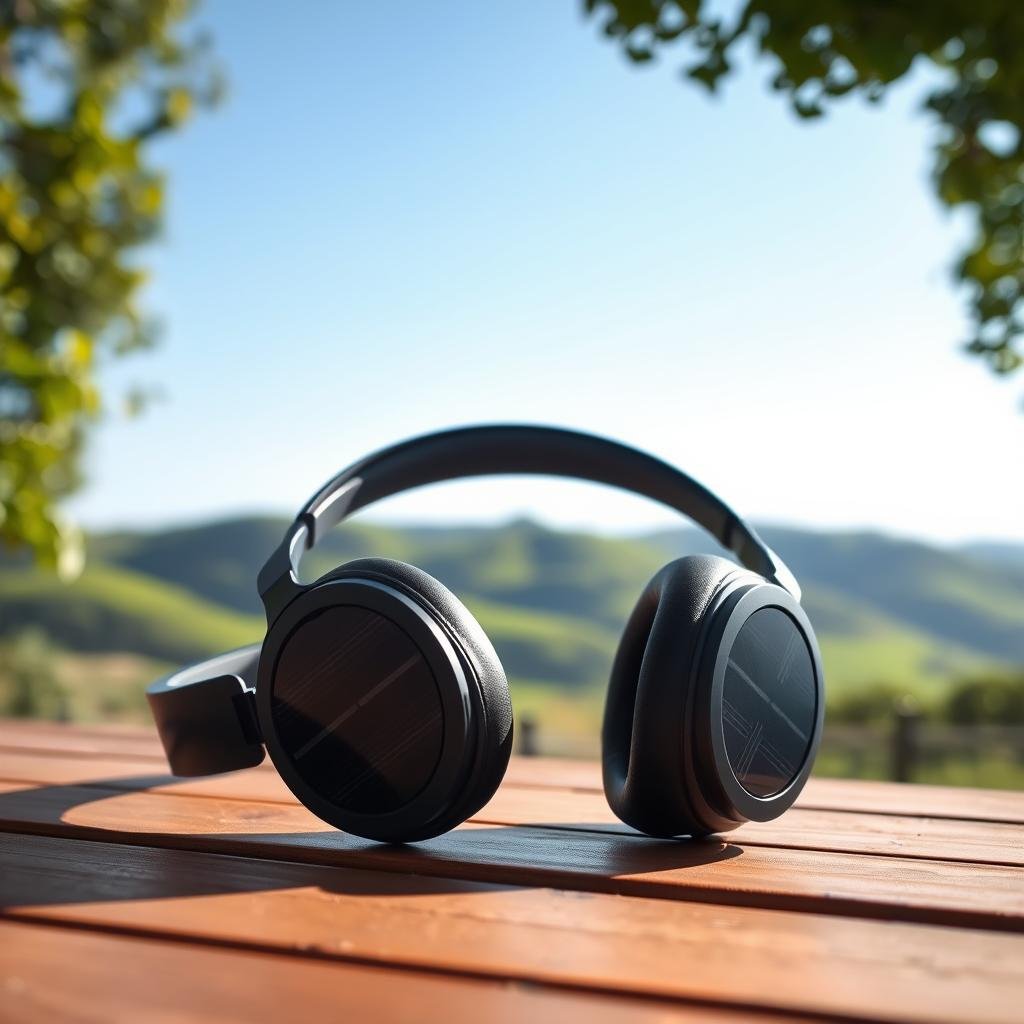
Today’s green audio gadgets have smart systems to make the most of solar power. They switch to battery power when it gets dark. This means you can listen for hours without running out of battery when you’re outside.
-Urbanista Los Angeles Solar Headphones
Product Category: Over-ear wireless headphones with solar charging capability
The Urbanista Los Angeles is a game-changer in eco-friendly audio. It has Powerfoyle solar cells that charge the battery from any light, even indoors. Its design is both stylish and comfortable, with the latest in green tech.
Key Features:
- Powerfoyle solar cell technology for continuous charging
- 80-hour battery life without solar charging
- Active noise cancellation with multiple modes
- Premium sound quality with custom 40mm drivers
- Comfortable over-ear design with memory foam padding
- Touch controls and voice assistant compatibility
Pros:
- Unlimited battery life in adequate lighting conditions
- Reduces electrical energy consumption significantly
- Premium build quality and comfort
- Excellent active noise cancellation
- Supports both wired and wireless connectivity
Cons:
- Higher initial purchase price than conventional headphones
- Solar charging efficiency decreases in low-light environments
- Slightly heavier than traditional wireless headphones
Why It’s Eco-Friendly: These headphones cut down on carbon emissions by using solar power. They don’t need to be charged as often, which saves energy. This earth-friendly audio equipment helps reduce energy use and offers top-notch sound quality.
Sustainable Materials and Ethical Manufacturing
Today, eco-friendly audio accessories show how green materials and fair making can offer top sound quality. Top brands prove you can care for the planet without losing sound quality. They use materials like bamboo, recycled aluminum, and organic cotton, all while keeping their making process fair.
This move towards green audio is more than just a trend. These makers focus on getting materials responsibly, caring for workers, and protecting the environment. They make products that sound great and help communities and nature.
Now, green audio tech mixes new tech with natural stuff. This makes products that sound amazing and are kinder to the earth. Let’s look at two leaders in this green shift.
-House of Marley Positive Vibration XL ANC
Product Category: Over-ear wireless headphones with active noise cancellation
House of Marley’s Positive Vibration XL ANC shows how green materials can improve sound and care for the planet. These headphones are made with materials that are good for the earth but don’t lose on sound quality.
Key Features:
- Sustainable bamboo and recycled aluminum construction
- REWIND fabric made from recycled plastic bottles
- Active noise cancellation technology
- 30-hour battery life with quick charge capability
- Signature Marley sound with enhanced bass
- Memory foam ear cushions with organic cotton
Pros:
- Excellent build quality with premium materials
- Outstanding battery performance
- Effective noise cancellation
- Comfortable for extended listening sessions
- Strong environmental commitment
Cons:
- Limited color options available
- Higher price point than conventional alternatives
- Slightly heavier due to sustainable materials
Why It’s Eco-Friendly: House of Marley plants trees for every product sold through One Tree Planted. They use bamboo, recycled aluminum, and REWIND fabric made from plastic bottles. They also support ocean conservation with the Surfrider Foundation. Their packaging is minimal and recyclable.
-Fairphone Fairbuds XL
Product Category: Modular over-ear wireless headphones
Fairphone’s Fairbuds XL is a big step in making things right and green. These headphones are made to last and are good for the earth. You can replace parts, not the whole thing, which is better for the planet.
Key Features:
- Modular design with replaceable components
- Conflict-free minerals throughout construction
- Premium audio drivers with balanced sound signature
- Replaceable ear pads and headband cushions
- Extended warranty with repair support
- Bluetooth 5.0 with aptX HD codec support
Pros:
- Fully repairable design extends product lifespan
- Ethical sourcing of all materials
- Excellent sound quality across all frequencies
- Strong company commitment to sustainability
- Transparent supply chain practices
Cons:
- Premium pricing reflects ethical manufacturing costs
- Limited availability in some markets
- Replacement parts require ordering online
Why It’s Eco-Friendly: Fairphone was the first to use conflict-free minerals in electronics. They make sure their supply chain is fair and safe. Their design cuts down on waste by letting you replace parts, not the whole thing. They share detailed reports on their environmental and social impact.
Both brands show that green materials and fair making lead to better products. They prove that biophilic design in audio tech can make things better for users and the planet. These companies choose long-term care for the earth over quick profits, making products that help both people and the planet.
Eco-Friendly Audio Gadgets 2025: Portable Speaker Solutions
Your search for green audio gear leads to cool portable speakers. These devices offer great sound and care for the planet. They use recycled materials, save energy, and have eco-friendly packaging.
Modern portable speakers are the future of sustainable sound technology. They play amazing music and are made with the environment in mind. You’ll find them made from recycled ocean plastics and biodegradable packaging.
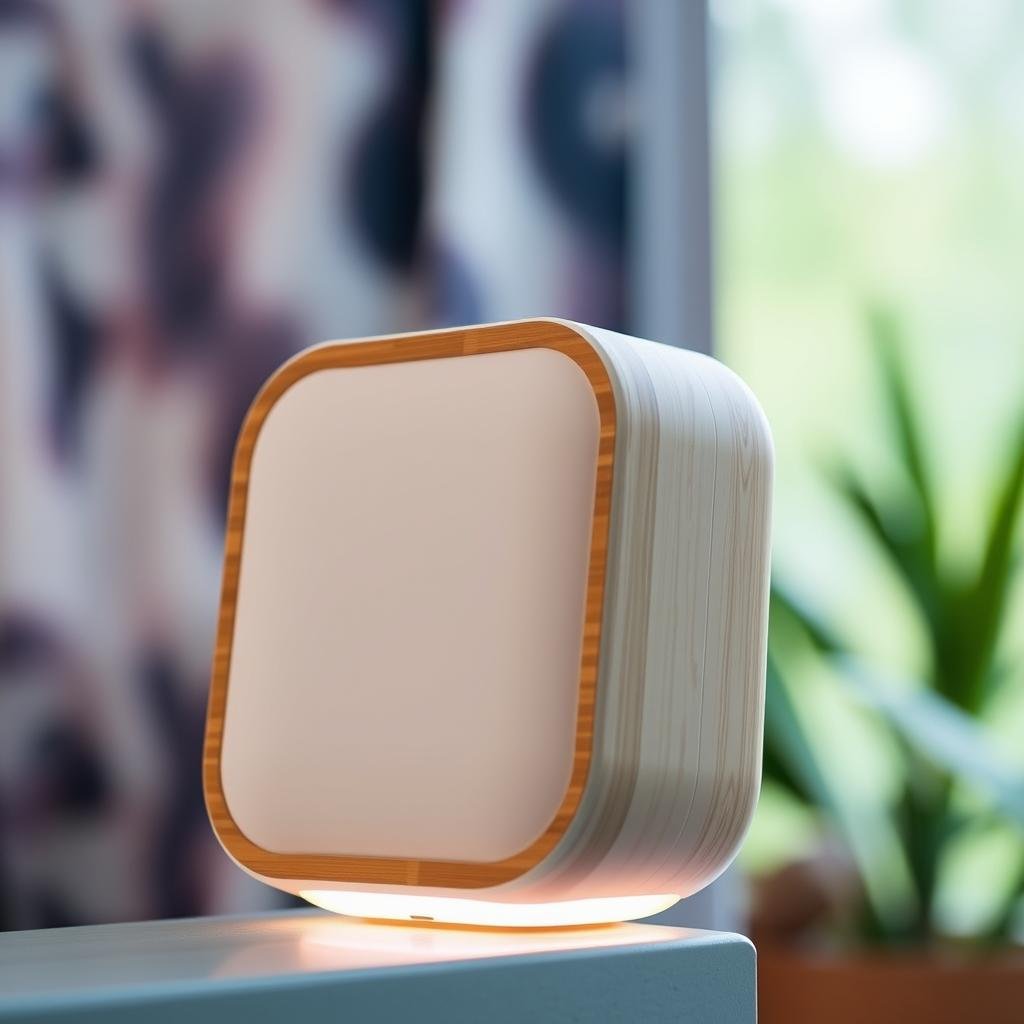
The shift toward sustainability doesn’t mean sacrificing the features you love. Today’s eco-friendly speakers are waterproof, have long battery life, and sound great. They show that green audio gear can be just as good as the rest.
– Compact Bluetooth Speaker with Ocean Plastic Construction
The JBL Go 3 Eco Edition is a great example of eco-friendly speakers. It’s small, perfect for carrying around, and looks cool.
Key Features:
- JBL Pro Sound technology for rich audio quality
- IP67 waterproof and dustproof rating
- 5-hour battery life with quick USB-C charging
- Recycled ocean plastic construction
- Sustainable fabric speaker grille
- Multiple color options with vibrant designs
This speaker packs a punch for its size. It’s tough for outdoor use and stays connected up to 30 feet away.
“We believe that great sound and environmental responsibility should go hand in hand, which is why we’ve reimagined our packaging and materials to create a more sustainable future.”
Pros:
- Excellent sound quality for its compact size
- Completely waterproof design
- Affordable price point
- Durable construction from recycled materials
- Quick and easy pairing process
Cons:
- Limited 5-hour battery life
- Bass response could be stronger
- No built-in microphone for calls
- Volume levels may not satisfy larger outdoor spaces
Why It’s Eco-Friendly: This speaker uses recycled ocean plastic for its housing. The packaging is a big step forward in sustainability, using 95% less virgin plastic. The company also cut ink usage by 60%.
The speaker’s grille is made from recycled materials. JBL’s efforts go beyond just the product. They aim to make a big difference with their whole process.
Premium Sustainable Audio with Social Impact
Some audio companies do more than just protect the environment. They also aim to make a positive difference in communities. These brands use advanced audio tech and have social missions that go beyond their products.
Looking for premium options? Look for labels and standards that check on environmental and ethical impact. Brands that focus on workers’ rights and use eco-friendly materials are leaders in this field. They blend recycled materials audio with social responsibility.
The top sustainable audio brands do more than just make eco-friendly products. They also make a real difference in communities. And they keep the sound quality high for those who love music.
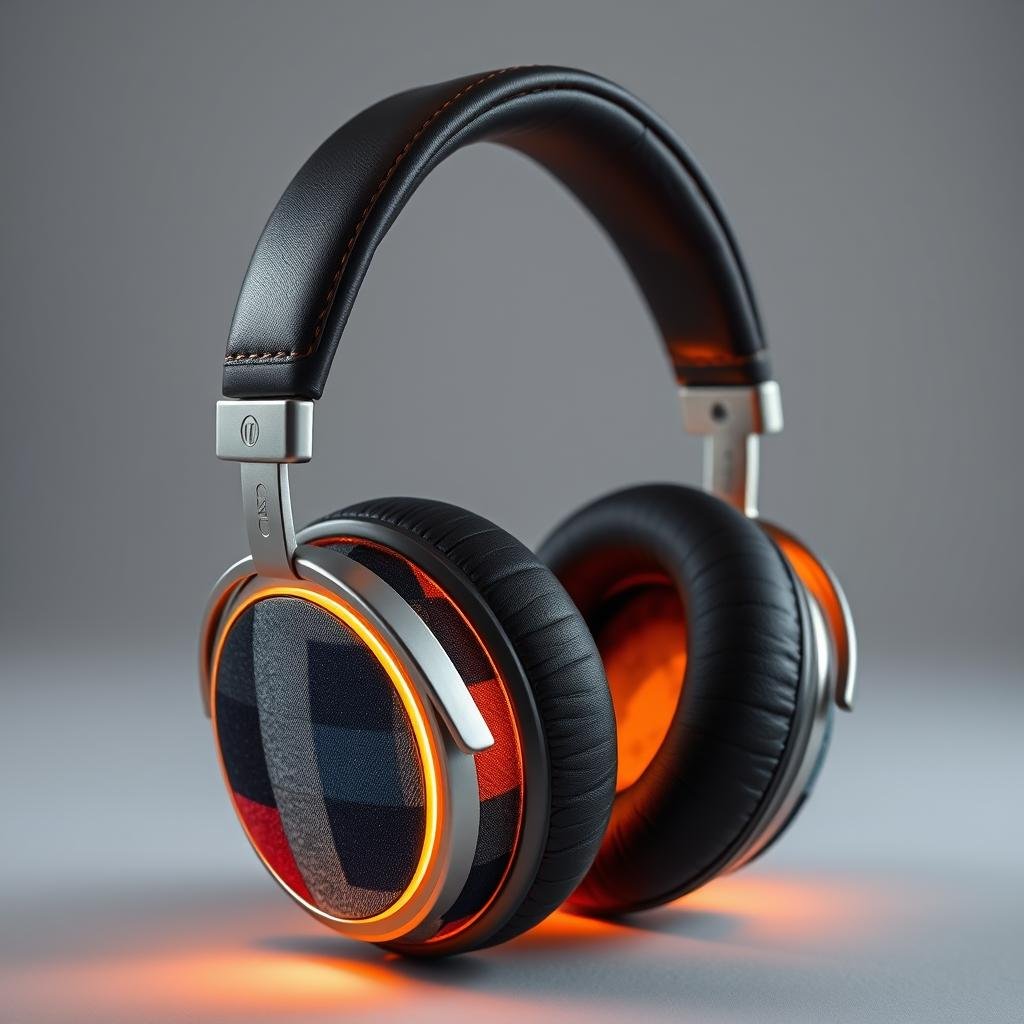
– LSTN Sound Co. Wireless Headphones
Product Category: Premium On-Ear Wireless Headphones
LSTN Sound Co. makes these headphones from reclaimed wood and recycled materials. They combine sustainability with style. Each pair is unique, thanks to handcrafted wooden construction. The company also helps with hearing restoration programs around the world.
Key Features:
- Handcrafted reclaimed wood construction
- Bluetooth 5.0 connectivity with 15-hour battery life
- Premium 40mm drivers for rich sound signature
- Comfortable padded ear cups and adjustable headband
- Built-in microphone for hands-free calls
Pros:
- Distinctive wooden aesthetic appeals to style-conscious users
- Strong social impact mission supports hearing restoration
- Quality construction rivals traditional premium brands
- Comfortable for extended listening sessions
Cons:
- Premium pricing may limit accessibility
- Wood construction requires careful handling
- Limited color options compared to plastic alternatives
Why It’s Eco-Friendly: LSTN uses wood that would be wasted. These headphones last long, unlike biodegradable earbuds. Their hearing restoration programs help those in need, adding to their environmental benefits.
Every time you buy from LSTN, they help someone get hearing aids. This shows how audio brands can make a real difference while providing great sound.
Natural and Biodegradable Audio Accessories
When your headphones reach the end of their life, they should nourish the earth instead of polluting it. Natural and biodegradable audio accessories are the latest in sustainable technology for the audio industry. These products use materials that can fully decompose without harming the environment.
Unlike regular electronics that add to e-waste, biodegradable audio gear uses nature’s recycling. Companies make these zero-waste audio equipment options from materials like bamboo and cork. These materials return to the earth naturally.
The move to natural materials tackles a big problem in electronics making. Many companies don’t use enough recycled content or energy-saving features. They ignore deeper supply chain issues. True environmental responsibility means thinking about the whole product life cycle.
– Reveal Bamboo Wood Earbuds
Product Category: In-ear headphones with biodegradable construction
The Reveal Bamboo Wood Earbuds show how renewable audio technology can offer great sound and help the environment. They have bamboo housing made from sustainably harvested bamboo. This gives a unique listening experience that connects you with nature.
Key Features:
- 100% bamboo housing with natural acoustic enhancement
- Ergonomic design for comfortable extended listening
- Tangle-free organic cotton cables
- Natural sound resonance properties
- Biodegradable packaging materials
Pros:
- Completely biodegradable construction
- Enhanced sound quality from natural bamboo acoustics
- Distinctive, attractive appearance
- Lightweight yet durable design
- Minimal environmental processing required
Cons:
- Sensitivity to moisture and humidity
- Limited color and style options
- Higher price point than conventional earbuds
- Requires careful handling and storage
Why It’s Eco-Friendly:
These earbuds are true carbon-neutral music devices because they’re made from biodegradable bamboo. Bamboo grows fast and doesn’t need replanting, making it very sustainable. The making process uses few chemicals, and at the end, the earbuds can naturally decompose without harming the environment.
The way bamboo is harvested helps forests grow while providing materials. This cycle means your audio accessories can return to the earth. They support forest growth and regeneration.
Refurbished and Circular Economy Audio Solutions
The best way to enjoy great sound is through refurbished audio products. This approach skips new production and focuses on reuse. It’s a big change in how we use green audio devices.
Most environmental harm comes from making new products. This includes carbon emissions, resource use, and waste. By picking refurbished environmentally friendly headphones, you avoid these problems.
Refurbishment is done with high standards. Experts check each part, replace old ones, and make devices look new again. You get warranties and guarantees just like new products.
Refurbishment checks audio quality, battery life, and durability. It also cleans devices and updates their software. This ensures they work well and are safe to use.
– Skullcandy Crusher ANC 2 Refurbished
Product Name & Category: Skullcandy Crusher ANC 2 Refurbished – Over-Ear Active Noise Canceling Headphones
Description: These refurbished headphones offer great bass and noise cancellation. They’re made to last, reducing environmental harm compared to new products.
Key Features:
- Adjustable sensory bass with Crusher technology
- Active noise cancellation with ambient mode
- 40-hour battery life with rapid charge capability
- Premium audio drivers with enhanced clarity
- Comfortable over-ear design with plush padding
- Built-in microphone for calls and voice commands
Pros:
- Significant cost savings compared to new units
- Identical performance and audio quality
- Comprehensive warranty coverage included
- Zero new manufacturing environmental impact
- Professional refurbishment with quality guarantee
Cons:
- Limited availability compared to new inventory
- Potential minor cosmetic imperfections
- Shorter warranty period than new products
- Color and style options may be restricted
Why It’s Eco-Friendly: Refurbished eco-conscious audio gear is the best choice for the planet. It cuts down on waste, emissions, and extends product life. It keeps devices out of landfills.
Choosing refurbished supports the circular economy. It uses resources already made, reducing waste and pollution. You get top-notch sound while helping the environment.
More people choosing refurbished helps the planet even more. It lowers the need for new products, reducing pollution and resource use. You enjoy amazing sound while making a difference.
How to Choose the Right Eco-Friendly Audio Gear for Your Needs
Choosing the right eco-friendly audio gear is more than just about sound quality. The market for sustainable audio tech is growing fast. But, it’s important to look beyond marketing claims to find true eco-friendly sound accessories.
Today, our choices affect the planet. By picking the right audio gear, you support companies that care about the environment. This careful process ensures your gear meets your needs and values.
Assess Your Audio Requirements
First, think about how you use your audio gear. Different needs call for different features. Do you need headphones for commuting, home use, exercise, or work?
Consider your daily activities and what matters most. Commuters might want noise cancellation and long battery life. Home users might prioritize sound quality. Athletes need gear that’s sweat-resistant and fits well.
Also, think about how often you use your gear and at what volume. Heavy users should look for durable products with parts you can replace. Casual listeners might focus on basic eco-friendly features without the high cost.
Research Sustainable Materials and Manufacturing
Look into the materials and packaging of your gear. True eco-friendly tech trends use recycled plastics, bamboo, cork, and reclaimed metals. These materials are better for the environment without sacrificing sound quality.
Check if the company is transparent about how they make their products. Companies serious about sustainable audio tech share detailed reports on their efforts. They show how they aim to reduce carbon emissions and use sustainable materials.
Watch out for greenwashing, where companies make false environmental claims. Real sustainable brands have third-party certifications and show real environmental improvements. Look into the company’s history and commitment to avoiding harmful chemicals.
Compare Energy Efficiency and Battery Life
Check how much energy your gear uses and its charging options. Devices that use less energy are better for the planet over time. Solar charging is a big plus for travelers.
Better battery life means less charging and fewer replacements. Some companies even offer to replace batteries to make your gear last longer.
Don’t overlook small features like standby power consumption and automatic shut-off. These can save a lot of energy over time. They help your gear last longer and use less power.
| Energy Feature | Environmental Benefit | User Advantage | Typical Savings |
|---|---|---|---|
| Solar Charging | Renewable energy usage | Unlimited outdoor charging | 80% grid dependency reduction |
| Extended Battery Life | Fewer replacement cycles | Less frequent charging | 50% longer device lifespan |
| Auto Power-Off | Reduced standby consumption | Battery preservation | 25% energy consumption decrease |
| Fast Charging | Lower energy waste | Quick power restoration | 30% charging time reduction |
Evaluate Brand Environmental Commitments
Look into the company’s sustainability reports and goals. Real environmental promises include specific targets and timelines. Companies should show progress and get third-party verification.
Check if the company is open about their supply chain and worker rights. Ethical eco-friendly sound accessories care about both the environment and people. Look for certifications like B Corp or Fair Trade.
See if the company has programs for recycling and repairing products. Responsible manufacturers offer ways to extend your gear’s life and reduce waste. These programs are good for the planet.
Also, consider the company’s broader environmental efforts. Some brands support reforestation, renewable energy, or education. Your purchase helps support these initiatives.
The Future of Sustainable Audio Technology Beyond 2025
The audio industry is on the verge of a big change. New tech is making devices last longer with solar power. Soon, all audio gear will run on renewable energy.
Materials science is making huge strides. New, sustainable materials are replacing old plastics and metals. These new materials come from plants and are better for the planet.
Self-healing materials are another big leap. They fix small damages on their own, making devices last for decades. This means your headphones and speakers will work better for a long time.
Energy harvesting tech is getting better fast. Soon, devices will charge from your movements. No more cables with wireless power.
3D printing with green materials will change how we make things. Local production will cut down on shipping emissions. Old devices will be recycled into new ones easily.
AI will make devices use less energy. It will know when to fix things before they break. Devices will talk to each other, sharing power.
| Technology Area | Current State | 2030 Projection | Environmental Impact |
|---|---|---|---|
| Solar Integration | Basic panels | Transparent solar cells | 100% renewable power |
| Materials | Recycled plastics | Lab-grown bio-materials | Zero waste production |
| Manufacturing | Centralized factories | Local 3D printing | 90% emission reduction |
| Lifespan | 3-5 years average | 20+ years with self-repair | Massive waste reduction |
Rules will get stricter to help the planet. People want products that are good for the environment. Companies will invest in green tech to meet these demands.
Choosing eco-friendly audio now means you’re ahead of the game. The green audio industry will keep growing fast. What we think of as green today will seem old soon.
In 2025 and beyond, biophilic audio integration will shape sustainable tech design. It’s not just about using green materials. It’s about combining nature’s beauty with sound to enhance well-being.
Imagine smart speakers that sound like a forest or earbuds that add sounds of nature. Experts say these devices will help with mental health, work focus, and sleep. As people want tech that’s good for their health, companies will make biophilic audio more common
Conclusion
Your next audio purchase is more than just fun. It helps shape the future of green tech and sustainable electronics. By choosing eco-friendly sound devices, you join 64% of shoppers who value sustainability above all else.
The seven products in this guide show how green audio tech can be top-notch and eco-friendly. From Urbanista’s solar headphones to House of Marley’s bamboo speakers, these items prove you can have it all without sacrificing quality.
Your buying power can make a big difference. Companies like Fairphone and LSTN Sound Co. exist because people want products made ethically and sustainably. When 80% of shoppers are willing to pay more for green products, companies listen and improve.
The move towards a circular economy and eco-friendly materials in audio shows growing awareness. Every green purchase sends a strong message to the industry about what you value.
Begin your journey towards sustainable audio today. Pick products that match your environmental values. Support brands that aim to make a positive impact. Your choice to go green helps create a better tech world for all.
If sustainability is your priority, you’ll love these gadgets — and you can see how they fit into the bigger scene in our Top 10 Best Smart Audio Gadgets You Must Have in 2025.
Related: Audio Glasses
Explore our Best Audio Glasses (Fall 2025) for open-ear music, clearer calls, and smart-assistant control.





